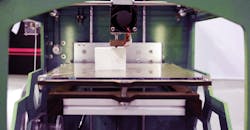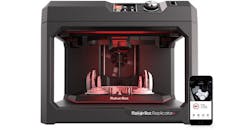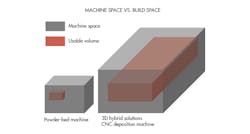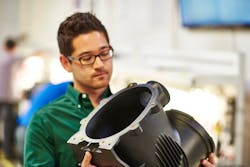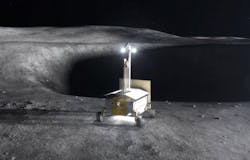Download this article as a .PDF
3D printing has promised much and delivered quite a bit. For example, 3D printers are readily available and relatively inexpensive—at least for creating small plastic objects. The MakerBot Replicator+ (Fig. 1) is just one example. It only costs $2,499.
“Makerbot is known for its quality 3D printers, and the Replicator+ is a testament to that reputation, considering it has been around forever,” noted Cabe Atwell on our sister site, MachineDesign.com. “Surprisingly, this 3D printer meets only two of the desirable qualities wanted for great prints: A powder-coated metal frame with an ABS case, but there’s no heated print bed! Instead, the Replicator+ features the company’s bendable Flexible Build Plate with kung-fu grip, which keeps prints from moving and popping off when done.”
Of course, not all developers are enamored by 3D printers. Cabe also highlights the flip side of 3D printers: “But like the movie montage where the kids clean up the house before their parents get home, they are glossing over the details. What isn’t shown is the effort, the sweat, the tinkering, the trial and error, and the screaming to the gods themselves to please, please let it work this time.”
He highlights a number of issues, including:
- Warping
- Porisity
- Prints not sticking to the bed
- Prints won’t come off the bed
- Prints that won’t get out of the way for the next print
- Printers are slow
- Way too manual
- Software
Still, advances continue to be made. There are a variety of 3D printer systems, and hybrid printing is starting to come of age. Computer numerical control (CNC) machines predated 3D printers, but some of these platforms are being tasked with 3D printing support (Fig. 2) that could be advantageous to both approaches.
Finally, check out Stephen Mraz’s article “3D Printing Gets Ready to Change Design and Manufacturing.” Steve talked with Kent Firestone, COO of Stratasys Direct Manufacturing, a leading provider of 3D printing and advanced manufacturing services. (Fig. 3).
“We see many parallels between the biggest engineering challenges facing 3D-printing companies and those facing 3D-printing users,” said Firestone, COO. “And because it’s our job to ensure their projects are successful, their challenges are our challenges. Our 2015 report, 3D Printing’s Imminent Impact of Manufacturing, surveyed 700 industry professionals and found the biggest hurdles were equipment and material and manufacturing costs, as well as limited materials. Speed of production and design accuracy were also on our customers’ radar.”
Of course, sometimes 3D printing may be out of this world. One of the first missions set to harvest materials in space is NASA’s Resource Prospector, set to launch as early as 2020 (Fig. 4). NASA awarded $25,000 to a team that designed a Mars Ice House for NASA’s 3D-printed habitat challenge.
3D printing has proven invaluable for prototyping, but this has been changing as 3D printing technology has advanced. Likewise, the plethora of materials now available for printing includes metals and even concrete. In the end, 3D printing is still a niche market—but a growing one.
About the Author
William G. Wong
Senior Content Director - Electronic Design and Microwaves & RF
I am Editor of Electronic Design focusing on embedded, software, and systems. As Senior Content Director, I also manage Microwaves & RF and I work with a great team of editors to provide engineers, programmers, developers and technical managers with interesting and useful articles and videos on a regular basis. Check out our free newsletters to see the latest content.
You can send press releases for new products for possible coverage on the website. I am also interested in receiving contributed articles for publishing on our website. Use our template and send to me along with a signed release form.
Check out my blog, AltEmbedded on Electronic Design, as well as his latest articles on this site that are listed below.
You can visit my social media via these links:
- AltEmbedded on Electronic Design
- Bill Wong on Facebook
- @AltEmbedded on Twitter
- Bill Wong on LinkedIn
I earned a Bachelor of Electrical Engineering at the Georgia Institute of Technology and a Masters in Computer Science from Rutgers University. I still do a bit of programming using everything from C and C++ to Rust and Ada/SPARK. I do a bit of PHP programming for Drupal websites. I have posted a few Drupal modules.
I still get a hand on software and electronic hardware. Some of this can be found on our Kit Close-Up video series. You can also see me on many of our TechXchange Talk videos. I am interested in a range of projects from robotics to artificial intelligence.
